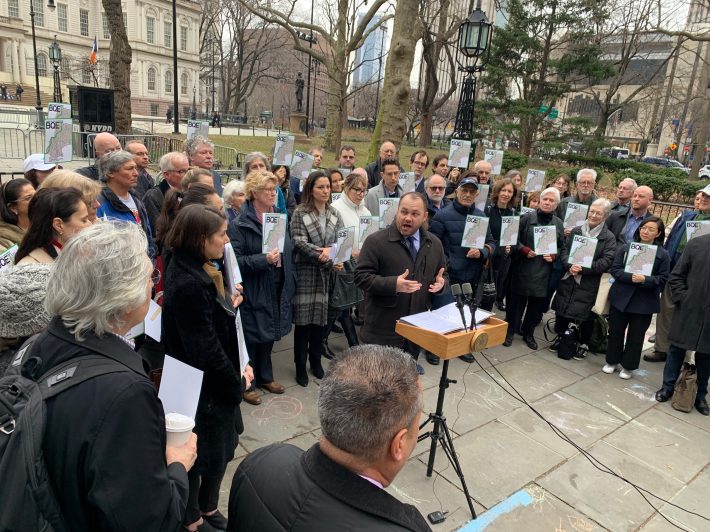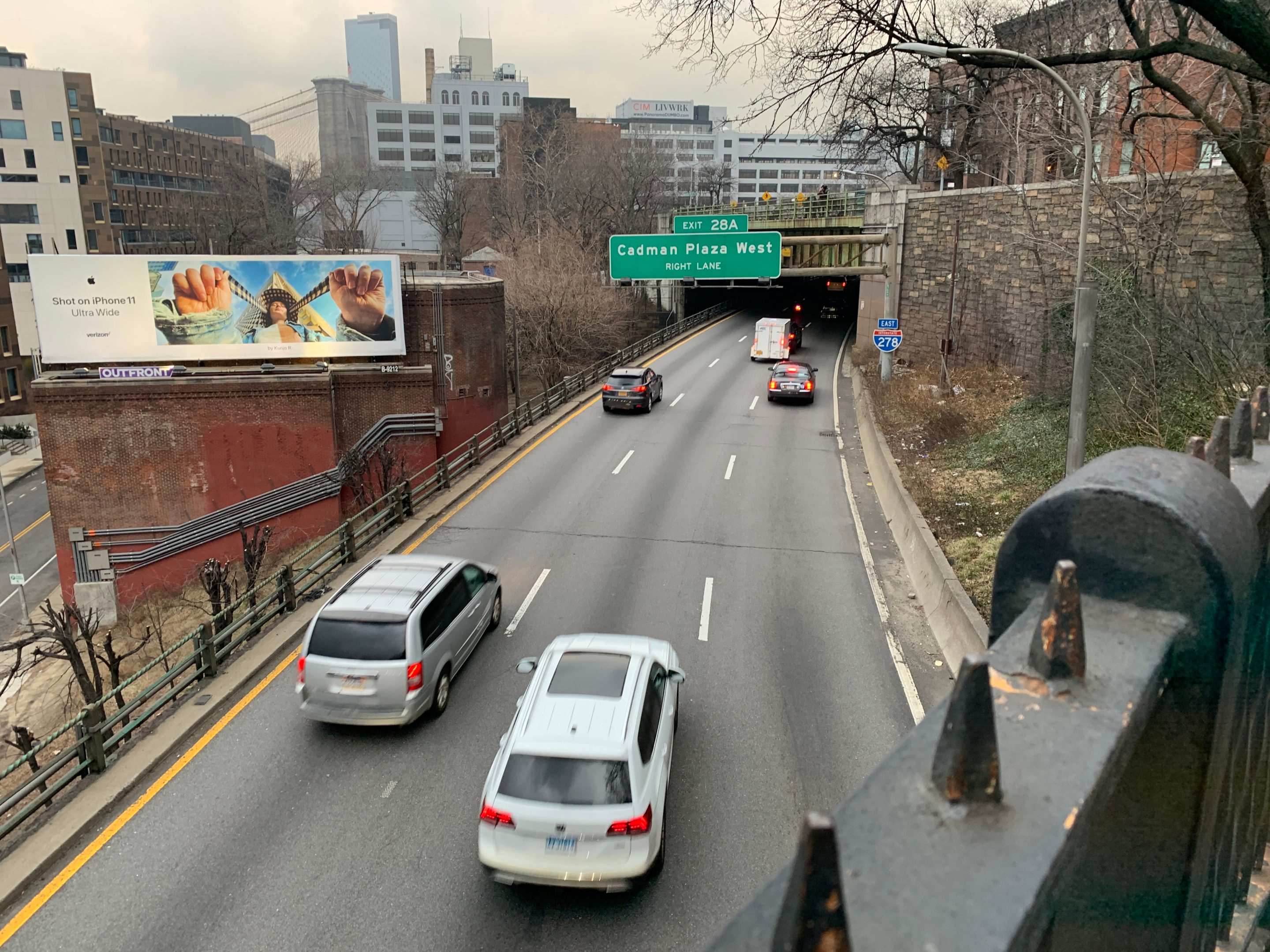Well, you get what you pay for.
The engineering firm hired by the City Council with a mandate to consider various repair plans for the Brooklyn-Queens Expressway's crumbling triple-cantilever section under Brooklyn Heights wasn’t asked about how the city might eliminate tens of thousands of vehicles from the roadway — only where to put them, according to honchos at the firm.
As a result, the firm only offered the Council two recommendations — a controversial $11-billion tunnel from Park Slope to the Navy Yard and a $3.2-billion mega-highway under a park — without seriously considering a plan that could so dramatically reduce car traffic that the roadway itself could be eliminated.
Brooklyn Council Member Antonio Reynoso — whose district includes a stretch of the six-lane highway that runs through Williamsburg — questioned the engineering experts at a Council hearing on Tuesday about why they hadn't presented a shrunken BQE plan that would reduce the number of vehicles choking the air with pollution and warming the atmosphere with carbon.
"If you take away highways, people get out vehicles, and it seems like the work you're doing here was to figure out a way to move 153,000 vehicles instead of dissuading people from single-occupancy use," he said, referring to the widely accepted theory of induced demand. "Should we tear down the highway instead of looking to accommodate a climate change contributor?”
The response from the Council-hired consultant was simple — no one asked his firm to look at that.
“That wasn't a question we were asked. We were asked to study [rebuild] alternatives that had been proposed,” said Trent Lethco, a transportation consultant with Arup Engineering, referencing the seven proposals set forth by architects, politicians, transportation advocates and community group in the last two years since the city revealed two widely reviled plans in September, 2018.
Arup looked only at what it was asked to look at under the terms of the $245,000 contract, Lethco said. It should be the city’s job to come up with ways to reduce car traffic and its deleterious effects — yet no one seems to be taking charge, he insinuated.
He didn't name names, but it was clear what city leader — cough, Mayor de Blasio, cough — he was referring to. The mayor last month rejected his own expert panel's recommendation to narrow the highway from six lanes to four. The Council didn't ask Arup to seriously consider anything except how the city should “best spend billions of dollars to rebuild this vital roadway,” as Streetsblog reported this week.
So Lethco dodged Reynoso's question, saying, in essence, a truly revolutionary notion of simply not replacing the highway is above his pay grade.
“I don't think you want me to tell you what the city should be doing relative to traffic, mobility, sustainability. I think we can help advise you on your choices, but I think that's really a question for elected leadership, policy people," Lethco said. "Again, not to keep saying this — if we know what we want as a city, then let’s put some goals and objectives around it. And if what we want as a city is less traffic, then let’s figure out how to have a city with less traffic and figure out the design response to that.”
City Comptroller Scott Stringer has pitched a plan to fix the existing stretch of the highway under Brooklyn Heights, but limit it to trucks and buses and divert Manhattan-bound car traffic to the Hugh Carey Tunnel and Queens-bound traffic to the Belt Parkway. The plan, which seeks to get people out of their cars and into public transportation, is among the boldest so far of the seven proposals. But without officials considering the root of the problem — the number of cars on the road — it's likely unattainable, Lethco said.
“The comptroller's plan is interesting from a freight, logistics, and transit point of view, but the unanswered question of traffic is a significant one. What happens with those vehicles?" he said. "In the absence of very heavy-handed policy measures, we will still have to deal with that traffic."
But even taking into account the proven theory of induced demand, Arup believes rerouting the estimated 153,000-175,000 vehicles on the BQE every day will be too much of a strain on local streets, according to Council spokeswoman Jennifer Fermino.
“Arup’s task was to look at every option for the future of the BQE and explore the viable options in depth. Arup concluded that tearing down the BQE with no plan for how to deal with diverted traffic would be unacceptable, even accounting for less traffic due to induced demand," Fermino said.

Johnson had said before Tuesday's hearing that he would seriously consider tearing down the highway if there was a legitimate, in-depth proposal to do so.
"If there is a legitimate way to figure out all the issues that we care so deeply about — and I think I’ve shown my mettle on, time and again, when it comes to transportation, the environment, prioritizing mass transit, making this city safer for pedestrians and cyclists — if there is a way to do this better, I’m all ears. ... Could that be done in a responsible way? I have not heard that it could be done right now."






